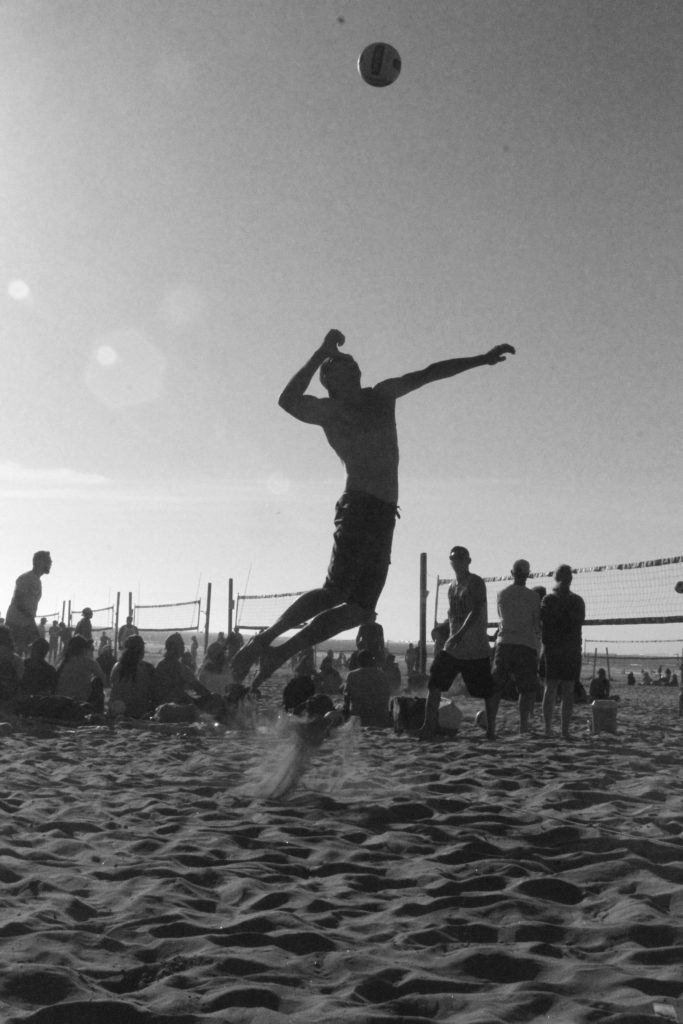The focus of this blog post is to provide information that will help overhead athletes avoid injury and improve their performance. Overhead athletes, such as pitchers and volleyball players often deal with shoulder pain. This is partly due to the high level of demand placed on the shoulder by their respective sports and partly because the shoulder is an inherently unstable joint. The shoulder joint sacrifices stability to gain a high level of mobility, allowing us to move the shoulder through incredible ranges of motion. The down side to having so much mobility is that, if the shoulder is not well controlled through the range of motion, muscles and structures surrounding the joint can become strained or injured. The most common injuries include rotator cuff muscle strains/tears, shoulder impingement, and labral tears. These injuries are avoidable if athletes take a few simple actions.

The first thing I often instruct athletes to do is make sure that they engage in an active warm-up before participating in full speed drills. An active warm-up increases blood flow to local tissues which in turn improves their extensibility and preps the muscle for further activity. For overhead athletes, an active warm-up should take the form of shoulder circles and movements through full ROM followed by some rotator cuff strengthening exercises with bands. This is not meant to fatigue the muscles so use light resistance. The athlete should then begin low level sport specific tasks and gradually build into full speed activity. For example, a pitcher would begin with low speed throws and progress into his fast ball.
The next key to avoiding shoulder injuries for the overhead athletes is making sure that their rotator cuff musculature is kept strong. The rotator cuff is a set of four relatively small muscles that control the position of the humeral head on the glenoid fossa. Weakness of these muscles can lead to injury, loss of power, and poor performance. The “Throwers Ten” is a well-rounded strengthening program for the shoulder that has stood the test of time and can easily be accessed and implemented into an athlete’s strengthening routine.
Perhaps the most common error leading to shoulder pain in overhead athletes is overtraining. Recovery is an integral part of the strengthening and training process. Too often I see pitch counts and serve repetitions that are far too high and performed much too often. The first signs of over training are fatigue, loss of power, constant soreness, and poor performance. If an athlete is experiencing these symptoms, they should build more rest into their program and allow their muscles to recover.
Lastly, overhead athletes should stretch the posterior capsule of their shoulder regularly to avoid shoulder injury down the road. Overhead athletes are notorious for developing Gross Internal Rotation Deficit (GIRD). GIRD is when an athlete has greater than normal external rotation range of motion but less than normal internal rotation range of motion in their shoulder. Often, I see that an athlete with GIRD will have reduced total ROM in their shoulder. These athletes are predisposed to impingement syndromes and other pathologies of the shoulder. Stretching the posterior capsule of the shoulder with a “sleeper stretch” can help avoid developing GIRD and keep athletes in the game longer.
It is my hope that these tips are helpful to those of you who have read them. If you have any more questions regarding shoulder pain or are dealing with pain yourself, please don’t hesitate to contact APRS Physical Therapy. Stay healthy and active!
Taylor Chadwick, PT, DPT, OCS is a Board Certified Orthopedic Specialist providing exceptional care to the Bozeman community at our APRS Physical Therapy West clinic.










